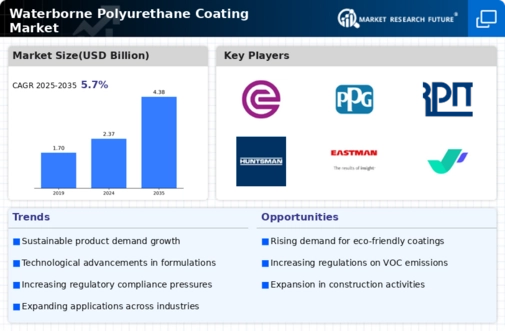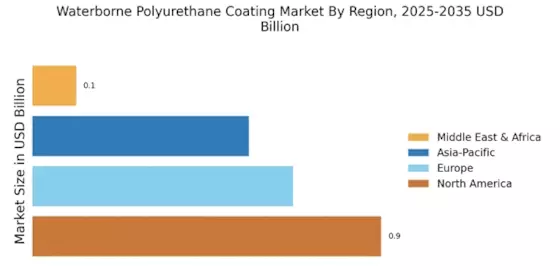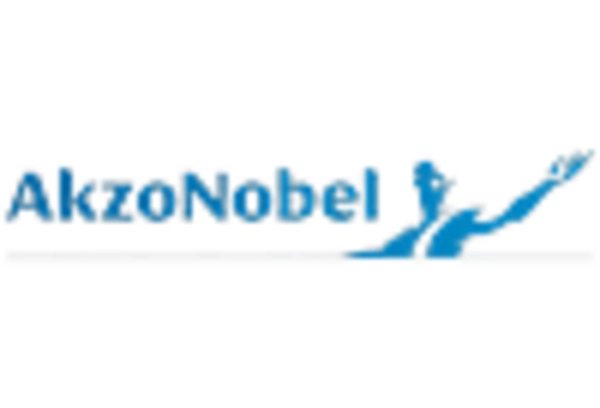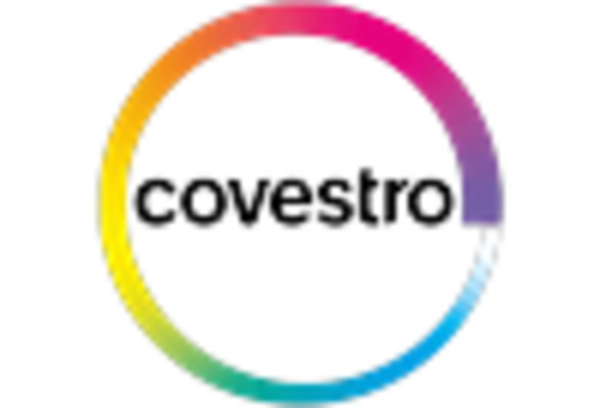Consumer Preferences
Shifting consumer preferences towards sustainable and high-performance products are significantly influencing the Waterborne Polyurethane Coating Market Industry. As consumers become more environmentally conscious, there is a growing demand for coatings that not only perform well but also minimize environmental impact. This trend is evident in various sectors, including furniture and flooring, where consumers are increasingly opting for waterborne polyurethane coatings due to their durability and low toxicity. Market Research Future indicates that by 2025, consumer demand for eco-friendly coatings is expected to rise, leading to an increase in market share for waterborne options. Manufacturers are responding by enhancing product offerings to meet these evolving preferences, thereby driving growth in the Waterborne Polyurethane Coating Market Industry.
Regulatory Compliance
Regulatory frameworks are becoming increasingly stringent, driving the demand for waterborne polyurethane coatings in the Waterborne Polyurethane Coating Market Industry. Governments worldwide are implementing regulations aimed at reducing VOC emissions and promoting environmentally friendly products. Compliance with these regulations is essential for manufacturers, as non-compliance can lead to significant penalties and loss of market access. As a result, companies are increasingly turning to waterborne polyurethane coatings, which inherently possess lower VOC levels compared to solvent-based alternatives. This trend is expected to continue, with the market projected to grow as more industries seek compliant solutions. By 2025, the regulatory landscape is likely to further influence product development and innovation within the Waterborne Polyurethane Coating Market Industry.
Technological Innovations
Technological advancements play a crucial role in shaping the Waterborne Polyurethane Coating Market Industry. Innovations in formulation and application techniques have led to the development of high-performance coatings that meet diverse industry needs. For instance, the introduction of advanced dispersion technologies has improved the stability and performance of waterborne polyurethane coatings. This has resulted in enhanced durability, chemical resistance, and adhesion properties. As of 2025, the market is expected to witness a compound annual growth rate (CAGR) of around 6%, driven by these technological improvements. Furthermore, the integration of smart technologies, such as IoT-enabled monitoring systems, is anticipated to revolutionize the application processes, ensuring optimal performance and efficiency. Such innovations are likely to attract significant investments, thereby fostering growth in the Waterborne Polyurethane Coating Market Industry.
Diverse End-Use Industries
The versatility of waterborne polyurethane coatings across various end-use industries is a significant driver for the Waterborne Polyurethane Coating Market Industry. These coatings find applications in sectors such as automotive, construction, furniture, and textiles, among others. The automotive industry, in particular, is increasingly adopting waterborne coatings due to their superior finish and environmental compliance. In 2025, the automotive segment is projected to account for a substantial share of the market, reflecting the growing demand for sustainable solutions. Additionally, the construction sector's shift towards eco-friendly materials is further propelling the adoption of waterborne polyurethane coatings. This diverse applicability not only enhances market resilience but also opens avenues for innovation and product development within the Waterborne Polyurethane Coating Market Industry.
Sustainability Initiatives
The increasing emphasis on sustainability is a pivotal driver for the Waterborne Polyurethane Coating Market Industry. As environmental regulations tighten, manufacturers are compelled to adopt eco-friendly practices. Waterborne polyurethane coatings, known for their low volatile organic compound (VOC) emissions, align with these sustainability goals. This shift is not merely a trend; it reflects a broader commitment to reducing environmental impact. In 2025, the market for waterborne coatings is projected to reach approximately USD 10 billion, indicating a robust growth trajectory. Companies are investing in research and development to enhance the performance of these coatings while maintaining their eco-friendly attributes. This focus on sustainability is likely to attract a diverse customer base, further propelling the Waterborne Polyurethane Coating Market Industry.


















Leave a Comment